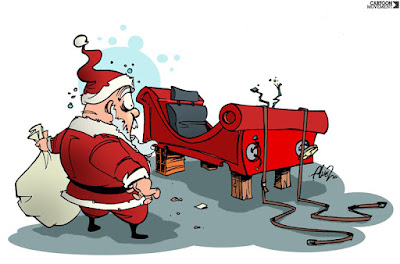CENTRAL
TO
SECURITY
Security
Series No. 2
by Ray Andersson
by Ray Andersson
SAFEGUARDING THE WORKPLACE
A PRACTICAL GUIDE FOR PUBLIC SERVANTS
These days we all should be
careful about home security - locking doors and windows, having suitable locks
and lighting. It is also an unfortunate
fact of life that we need to be on our guard against theft in the workplace.
Many of us think of our office as
a “home away from home” and we want to believe that our personal possessions,
and the government owned equipment we use, will be safe at work. We don’t want to think that our personal
items or work tools will “walk off”. But
office security, like personal health, is often lightly regarded until something
happens. There are departmental and
Australian Federal Police (AFP) concerns about the incidence of theft in the
workplace.
Some managers and employees may falsely believe that crime
in the workplace is not their problem, that it is a matter for security to
deal with. Theft at work is a problem
for us all. Don’t be disadvantaged
through carelessness at work. Get your
co-workers and supervisors together to discuss how you can best ensure the
security of all property and staff.
Here are some basic pointers on how to prevent or minimise theft in your workplace.
Personal Belongings
Ø ALWAYS
keep your wallet or handbag with you or locked in a secure drawer or cabinet.
Never leave them unattended.
Ø Smart
thieves are quick. Never leave petty cash, government credit cards, wallets or purses insecure, even if its only for a minute or two. Lock them away unless you are using them or they are in you personal possession.
Ø Ensure
that a safe place is provided by your agency, to secure your personal belongings in the
workplace, then use it.
Ø When
you travel on official business, keep your excess cash, debit or credit
cars or traveler’s cheques with you or locked away in a hotel safe. NEVER
leave ‘valuables’ in your suitcase, under the mattress or in a coat pocket.
Visitors
Ø Don’t assume that a stranger wandering in the
building is a member of staff. A simple
“Can I help you” may be all that is necessary to deter a potential thief.
Ø Don’t allow anyone to remove equipment without
checking first that they have authority to do so.
Ø Don’t leave callers alone in the office.
Repairpersons
Ø Ask for identification - even if the
repairperson is wearing a uniform; if
you must leave the office area ensure that attractive items and information are
properly secured in your absence.
Ø Be cautious ... uniforms, or patches
with company or a person’s name, can look authentic but can be stolen or
imitated by determined thieves.
Ø Always check the identification of
any stranger who comes to your office to do repair or other type of service
work. If you think it’s necessary, call
the repair company and ask if they have a work order for your office and who is
authorized to do the work.
Reporting Incidents
Ø Notify all security related incidents -
including any apparent security weaknesses which may have contributed - to your Security Liaison Officer who will
notify the Security Manager. Make sure
you report anything that is missing - government or personal property -
immediately.
Ø Try to remember the day and time you last saw
the item and where you saw it. Describe
the item thoroughly. If it is marked
with an identification number or symbol, give that information to the security
liaison officer.
Your departmental security units'
role, in dealing with reported incidents, is to analyse the incident and its
circumstances, co-ordinate investigative and preventative action to mitigate
any further occurrence of a similar incident, and to give feedback to management
and employees reporting incidents.
Keeping Track of Your Office
Equipment and Furniture
Ø Ideally, all office equipment and furniture
should be marked, e.g., an engraved symbol and an identifying property number,
in a prominent spot. Plans to mark
relevant items should be discussed with the appropriate equipment officer in
your area, as some marking procedures may conflict with Departmental
policy. Also, where practical, mark
any personal property with your initials and/or an identifying number (e.g. Driver’s
Licence No.).
Ø Ensure that an an up-to-date inventory of your
office furniture and equipment (and a separate list for personal property) is
kept in a locked drawer or cabinet. List
each item, with its model and serial numbers, engraved or marked symbol, and a
thorough description of the item.
Ø Do regular inventories of equipment and
furniture that is not used daily, and don’t store unused equipment (Tablets, audio
recorders or other attractive items) on top of cabinets, under tables, or in
isolated areas. Lock the equipment in a
cabinet or closet and make sure all items are marked and listed; it may be more
practical for unused equipment to be returned to a stores area.
Ø Consider whether larger equipment (eg. personal
computers, laptops, etc) should be secured by an approved security device.
Safe Combinations/Computer
Passwords/Keys
Ø Memorize
combinations and passwords, but you should also have a backup system
for use when a co-worker is on leave or moves to a new job and no one remembers
the combinations and passwords.
Ø Write or type the safe and vault combinations
and computer passwords on a piece of paper.
Double envelope the paper and secure with appropriate security wafer
seals. Put the envelope in an
approved security container and record details of anyone accessing the
contents of the envelope. Change the
combination(s)/passwords, as soon as possible thereafter.
Ø Ensure that all combinations and passwords are changed on a regular basis, and
especially when a staff member ceases duties in that particular office/area. Be careful with keys and locks. Keep keys in
a safe place, not “hidden” in drawers, tins, etc. Your departmental security unit can help
with advice.
Office Security Tips
Ø Keep that back door locked.
Ø Lock all offices or conference or storage rooms
that are regularly unoccupied.
Ø If you’re the last person to leave at night
(and especially before weekends or holidays), secure all computer systems,
critical files and copiers. If your
office uses any electrical appliances, make sure they are switched off. Most importantly - close and lock all relevant windows and
doors. Where alternative arrangements
have been made for cleaning, emergency access, etc., lock your office door.
Ø Remember that not all thieves are necessarily
outsiders.














